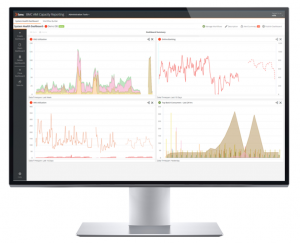Mainframe organizations continue to embrace the next-gen staff during this mass exodus of experienced workers. BMC’s 2019 Mainframe Survey showed that nearly a third of the current workforce has less than 5 years’ experience. Whilst this new talent embraces the platform, they also recognize the need to embrace new methodologies that foster agile development, data recovery and integrating AIOps implementations in an effort to modernize the mainframe. However, with new talent comes new challenges.
How do IT organizations balance the mix of integrating new staff with the existing workforce, foster collaboration and knowledge sharing while staying focused on successfully managing and advancing the mainframe in this digital world?
BMC AMI Capacity Management v2.1
One area where the problem is most acute is capacity planning. At the end of 2019, BMC launched the next generation of mainframe capacity tooling, BMC AMI Capacity Management. Designed with a modern UI, this revolutionary tool was specifically designed to address the loss of skills at customer sites by embedding expertise directly into the tool.
- Embedded workflows provide the ability for new staff to quickly and easily analyze systems and their performance.
- Intelligent dashboards and analytics ensure that capacity management is capable of meeting the digital age.
- Extensive knowledge sharing fosters collaborative work streams across multiple sites and geographies.

Added Capacity Planning Benefits
In this month’s new release, version 2.1, BMC has expanded on the first set of workflows by providing an expanded set of KPIs and have introduced new workflows representing a best practice approach to automatically assessing the health of the mainframe. This invaluable tool represents decades, if not a centuries, of BMCs capacity and performing experience.
With a focus on user experience, this new system offers the addition of category definition text-based search and even simpler ways to define and manage workflows. Not only that, it has tripled the number of defined workflow templates, expanding to cover Db2, CICS, XCF, Workload Manager and various areas of the disk subsystem, and has further enhanced the intelligent alerting for anomalous conditions.
Organizations now have more capabilities than ever before when defining their own capacity management workflows, capturing the expertise and knowledge of their experienced staff and sharing that wealth with their new hires.







